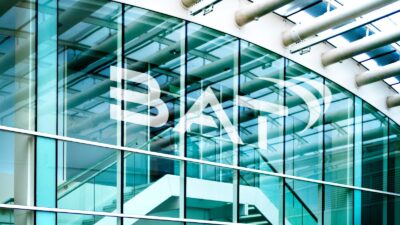Investors bemoaning the relative underperformance of the FTSE 100 compared to the S&P500 since the end of the Financial Crisis would do well to point their fingers squarely at the commodities sector and the UK’s largest banks. Since June 2009, the FTSE 350 Banking Index has fallen 17% while the Dow Jones US Banking Index has jumped a full 70%, and surged 90% if you include dividends.
Anyone feeling optimistic on the ability of domestic banks to finally turn the corner and catch up to their rivals across the Atlantic is likely to be in for further heartbreak. The main culprits are the mountains of bad assets still on the books of the UK’s largest lenders. Barclays (LSE: BARC) retains £51bn of assets that it’s seeking to rid itself of, while RBS (LSE: RBS) holds £47.6bn in its non-core portfolio. Meanwhile, even the American bank hit hardest by the crisis, Citigroup (NYSE: C), has run down its bad asset portfolio enough that it no longer feels the need to separately report its size.
PPI pain
The effect these bad assets have in dragging down profitability is evident in the return on equity (RoE) at each bank. Even non-adjusted RoE for Lloyds (LSE: LLOY), the healthiest of the UK’s big lenders, was a miserly 1.5% in 2015 as PPI claims payments totalled £4bn. Granted, the bank’s adjusted underlying RoE was an impressive 15%, but with several more years of PPI claims to go, investors shouldn’t expect massive improvements in statutory results anytime soon. RoE for Barclays and RBS was even worse as these two sank to pre-tax losses last year.
China syndrome
While each of these three are making good progress in recovering from the after-effects of the Financial Crisis, the two lenders that escaped relatively unscathed, HSBC (LSE: HSBA) and Standard Chartered (LSE: STAN), have now been hit with their own headwinds. Each of these emerging markets-focused giants rode out the Crisis without needing a bailout thanks to the China-fuelled Commodity Supercycle. However, now that Chinese growth is slowing, commodities prices have crashed and economies across the developing world are slipping into recession, each bank’s medium-term outlook is poor to say the least.
Standard Chartered has already been forced to slash its dividend and issue new equity in order to maintain its balance sheet to cope with the downturn. HSBC is in better shape, but analysts are forecasting 2017 to be the company’s fourth straight year of declining earnings per share.
Still vulnerable
The economic downturn dragging down profits at HSBC and Standard Chartered should also scare shareholders of the UK’s more domestic-focused lenders such as Lloyds, RBS and Barclays. These three have enjoyed steady, if unspectacular, growth in the domestic economy, even if their share prices haven’t reflected it thanks to the mixture of toxic assets, large regulatory fines and high costs. With GDP growth slowing to a crawl, the potential financial impact of Brexit and an economy seemingly unable to cope with a return to normal interest rates, these banks are looking incredibly vulnerable to me.
With billions in bad assets still on the book, less-diversified revenue streams and economic headwinds mounting, the UK’s largest banks inspire little confidence in me that they’ll buck the trend since the Financial Crisis and catch their American counterparts any time soon.







